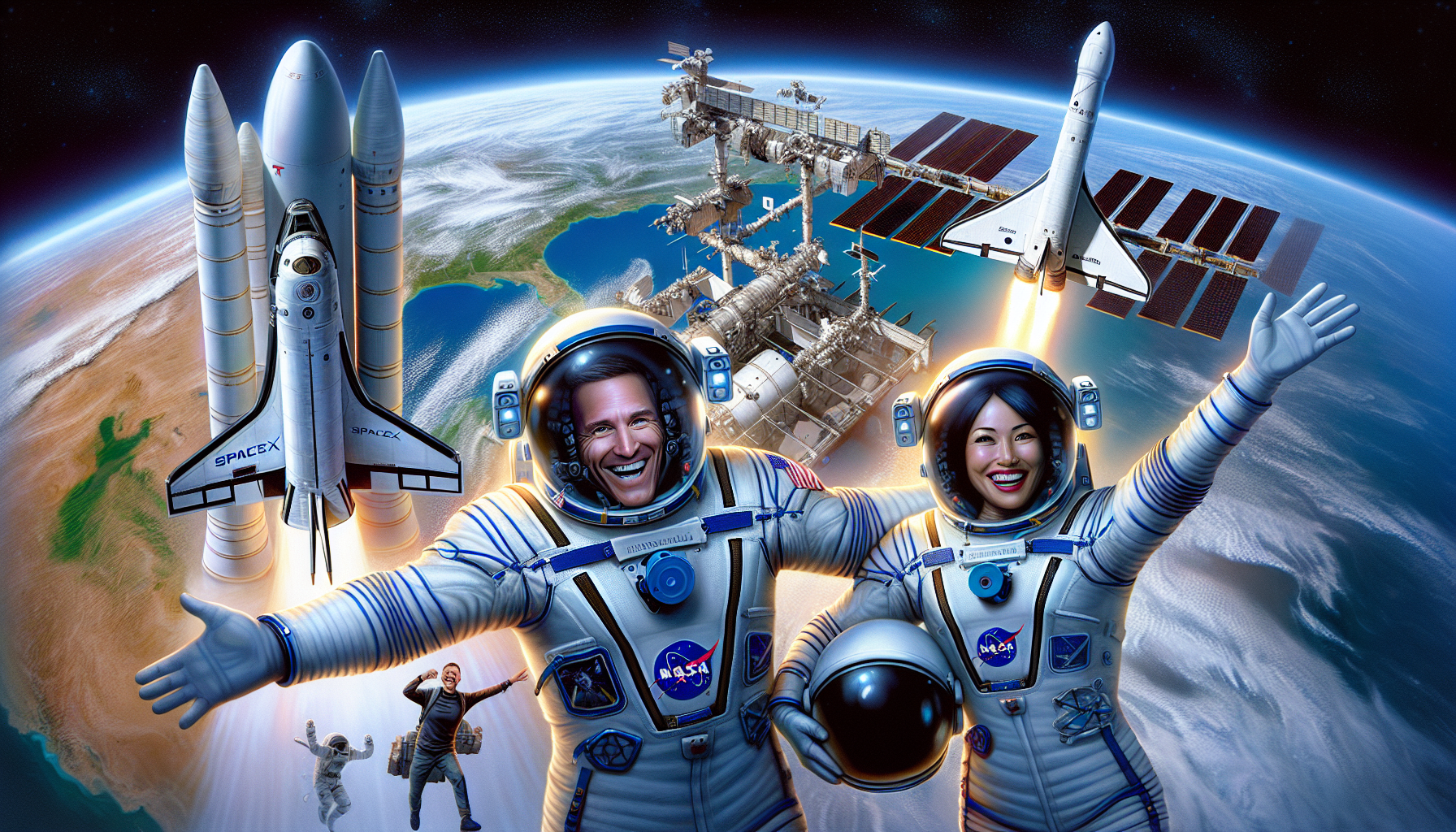Boeing Starliner Astronauts Return to Earth After Extended Stay on ISS
Two NASA astronauts, Butch Wilmore and Suni Williams, are finally returning to Earth after spending nearly nine months aboard the International Space Station (ISS). Originally scheduled for a nine-day mission, their journey was extended due to technical issues with Boeing's Starliner spacecraft. The astronauts are now set to return aboard a SpaceX Dragon capsule, marking a significant shift in NASA's crew rotation plans and raising questions about Boeing's future in space exploration.

The Unexpected Extension of the Starliner Mission
In June, Wilmore and Williams embarked on what was supposed to be a short test flight aboard Boeing's Starliner capsule, named "Calypso." The mission aimed to validate the spacecraft's capabilities for future crewed missions. However, during docking at the ISS, thrusters on the Starliner malfunctioned, raising concerns about its ability to safely return the astronauts to Earth. As a result, NASA decided to extend their stay on the ISS while engineers worked to understand and resolve the issues.
After three months of analysis, NASA concluded that the Starliner was not ready to carry the astronauts home. Instead, the agency opted to return the capsule empty and arranged for Wilmore and Williams to return aboard a SpaceX Dragon spacecraft. This decision highlighted the growing reliance on SpaceX for NASA's crewed missions and cast doubt on Boeing's ability to compete in the commercial spaceflight sector.
NASA's Crew Rotation Adjustments
To accommodate the return of Wilmore and Williams, NASA had to make significant adjustments to its crew rotation schedule. The agency removed two astronauts from SpaceX's Crew-9 mission, which was originally set to return to Earth this week, to make room for the Starliner crew. This reshuffling delayed the launch of SpaceX's Crew-10 mission, which was initially planned for February but was pushed back to March.
The Crew-10 mission successfully launched on Friday evening, and its capsule docked at the ISS approximately 29 hours later. This marked the arrival of four new crew members, ensuring a smooth transition and continued operations aboard the space station.

The Broader Implications for Boeing and SpaceX
The extended mission of Wilmore and Williams has significant implications for both Boeing and SpaceX. For Boeing, the Starliner program has been plagued by setbacks, including technical failures and financial losses exceeding $2 billion. The company's inability to deliver a reliable crewed spacecraft has raised questions about its future in NASA's Commercial Crew Program, which aims to foster competition between private companies for spaceflight services.
On the other hand, SpaceX has solidified its position as a leader in the commercial space industry. The company's Dragon spacecraft has become NASA's go-to vehicle for crewed missions, demonstrating reliability and efficiency. The successful return of Wilmore and Williams aboard a Dragon capsule further underscores SpaceX's dominance in this sector.
Political and Public Reactions
The situation also became entangled in political discourse. Former President Donald Trump and SpaceX CEO Elon Musk criticized the delay in returning the astronauts, suggesting without evidence that the Biden administration had kept them on the ISS for political reasons. NASA, however, maintained that the delay was necessary to ensure the safety of the astronauts and to address the technical issues with the Starliner spacecraft.
Despite the political noise, Wilmore and Williams have remained focused on their mission. During their extended stay, they conducted scientific experiments, performed routine maintenance, and even participated in a spacewalk. Williams emphasized that they did not feel "abandoned" and expressed excitement about returning home to their families and pets.
What This Means for the Future of Space Exploration
The extended mission of the Starliner astronauts highlights the challenges and uncertainties of space exploration. It also underscores the importance of having multiple reliable spacecraft options for crewed missions. While SpaceX has proven its capabilities, Boeing's struggles with the Starliner program serve as a reminder of the complexities involved in developing and operating advanced space vehicles.
Looking ahead, NASA's reliance on SpaceX may continue to grow, especially if Boeing is unable to resolve the issues with its Starliner spacecraft. This could lead to a more monopolistic environment in the commercial spaceflight sector, potentially stifling competition and innovation. However, it also presents an opportunity for other companies to step up and fill the gap left by Boeing's underperformance.
Conclusion: Market Implications in the Coming Weeks
The return of Wilmore and Williams marks the end of a challenging chapter for NASA and Boeing. For the market, this event could have several implications in the coming weeks. Investors may scrutinize Boeing's financial performance and future prospects in the space sector, potentially leading to volatility in its stock price. Meanwhile, SpaceX's continued success could attract more attention and investment, further solidifying its position as a market leader.
Additionally, the situation may prompt NASA to reevaluate its partnerships and strategies for crewed missions. The agency could seek to diversify its options by investing in other companies or accelerating the development of alternative spacecraft. This could create new opportunities for emerging players in the space industry.
In summary, the extended mission of the Starliner astronauts serves as a reminder of the risks and rewards of space exploration. While it highlights the challenges faced by Boeing, it also underscores the resilience and adaptability of NASA and its partners. As the space industry continues to evolve, the lessons learned from this mission will undoubtedly shape its future trajectory.

